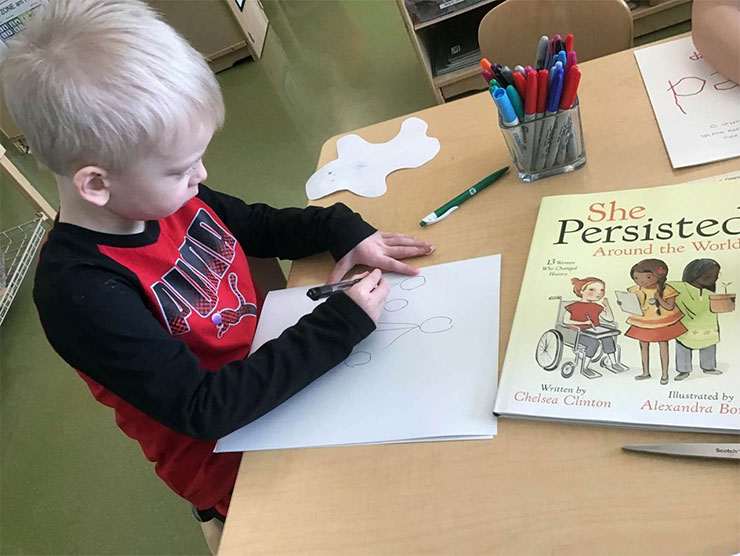Last summer, the New York Times did a roundup of corporate America’s response to racial inequality. “Since George Floyd’s killing,” wrote the paper, “businesses of all kinds have expressed their solidarity with protesters, donated millions of dollars to organizations dedicated to racial justice, or vowed to change their office cultures to be more inclusive.” But a year later, have the proclamations really changed anything – or been enough?
These are questions Felicia Robinson thinks about often. Newly arrived to Bright Horizons, the Chief People and Inclusion Officer says change will only happen when we deal with systemic racism – the judgments and opportunities doled out based on what people look like instead of their talents. “One of my mentors used to say that talent is universal,” she says, “but inclusion and access are not. So we’ve got to park right there in the space where are we are making choices that impact people just because of the way they look or who they choose to love.”
Nearly two months into her new role, Felicia talked candidly about all of it – about what’s changed since George Floyd, what hasn’t, and why leaders will need to get the whole company on board to get it right.
Lisa Oppenheimer: Let’s start with where we are a year later. Do you think there’s been progress?
Felicia Robinson: That’s an interesting question. Something about George Floyd’s death triggered a movement. And for the first time for so many people, they finally saw it. It became really real for them. That part was amazing – finally their eyes were opened. And a lot of companies got on the DEI bandwagon, as they rightly should. But if I were to think about where we are a year later, for all of that hype, the money and the statements that were put out, I’m not sure I can say that companies have made significant progress.
LO: Is that because maybe it’s no longer as top of mind as it was a year ago?
FR: I actually think it is top of mind. What may come across as a perceived stall is likely due to companies that lack capability or that are maybe struggling with the courage and commitment to move forward with bold moves.
LO: What would capability and courage look like?
FR: DEI is not about all the things you can put on a PowerPoint, or all the things you can say publicly to create the façade that you are all about the movement and social justice. It really is about determining, what culture do you want to stand for in your company? When someone joins this company, how do we want them to feel about being here? Do we want them to feel like they can see themselves at this company? Do we want them to wake up feeling like they’re an outsider? So it really is about the culture that we’re trying to create.
LO: Where do you start?
FR: There has to be accountability – making sure people are accountable at all levels of the organization. Not just leadership or the faithful few. I’m not sure how sustainable your efforts are going to be if you don’t have that accountability and people who feel personal responsibility at every level of your management. A company may feel good about their efforts organizationally, but if every day I’m having to deal with a manager who absolutely doesn’t see me, that’s tough, right?
LO: What stops companies from taking real action?
FR: Some people say, “I’m not comfortable with this subject.” And I get that it’s hard to be comfortable being uncomfortable. Well, think about this…who was comfortable with COVID-19? I don’t think anyone was comfortable with that, right? And what did we all do when we were all faced with a global pandemic? We took a pause, we reorganized, we adjusted, and we leveraged our ability to move fast, to change something because our business had been disrupted. So it’s sort of treating this as we do any other big business problem. Imagine if we had all been simply immobilized by the global pandemic and did not take the appropriate actions? We wouldn’t be where we are today. I think we need to treat systemic racism very similarly because it is also a global pandemic.
LO: How do you move people to the realization that this is a business problem?
FR: There’s all kinds of data out there that ties DEI to a business imperative. I like to look at it through the lens of the customer experience. Do we have the right voices at the table to serve a diverse customer base? Because if a company desires to increase market share with a particular group of customers, and those customers look very different from the makeup of your employee base, that could be a challenge. There’s also power in the diversity of thought, of creativity, of reimagining. It’s very difficult to have that when you have a workforce that looks all the same. You just won’t get as far as you would if you have folks with different perspectives and different experiences; and sometimes, to get that difference, you have to invite and welcome team members to the table who don’t look like or think like the existing team members.
LO: Do you see a single, biggest obstacle to leveraging those perspectives and experiences?
FR: I think the biggest obstacle to progress is indifference. There are people who feel like this isn’t really something that we should be talking about; or that it isn’t something that we should be making a company high priority; that’s essentially indifference. And that’s harder to detect than people who are out front saying that they don’t care about this issue.
LO: What piece of advice would you give to a company looking to start this journey?
FR: I would say, have a tops-down and a bottoms-up approach. You have to know what you want to accomplish organizationally with DEI – align on the business imperative and understand what is in it for your customers. But it also starts with a bottoms-up approach. People have to do the work of some kind of individual journey and individual assessment before they can lead their teams on this journey. I think if you can figure out the organizational piece and the individual/leadership part of the journey, you will find a magic spot right there in the middle.
Check back next week for part 2 of our DEI conversation with Felicia.




